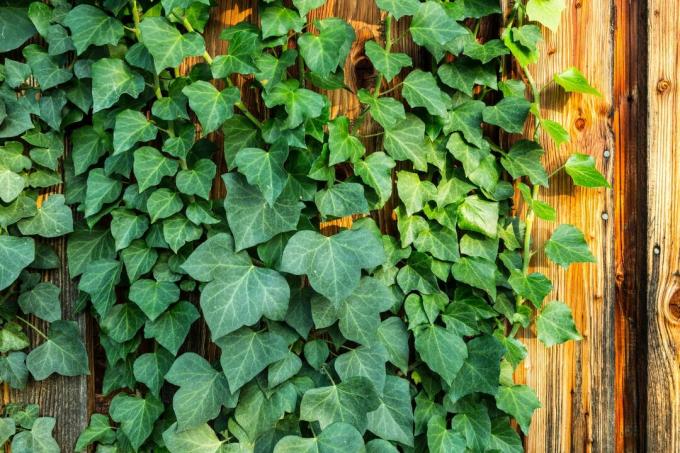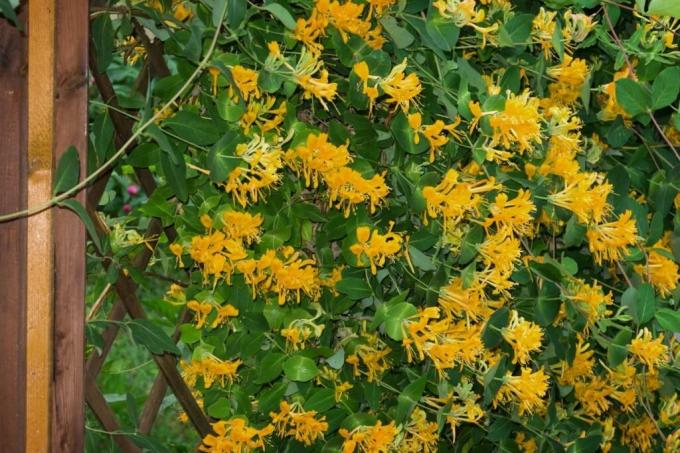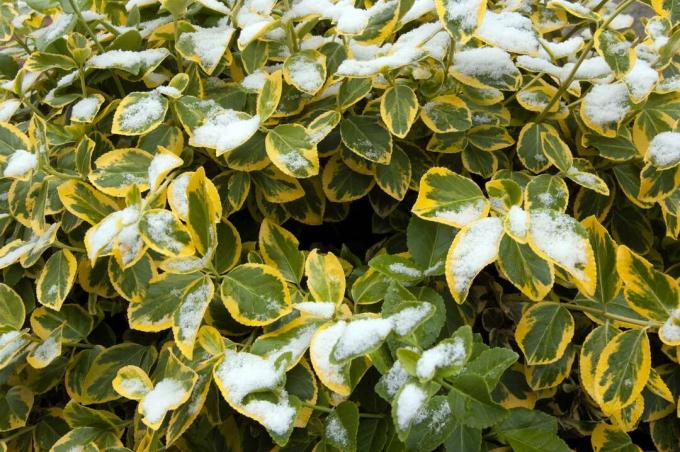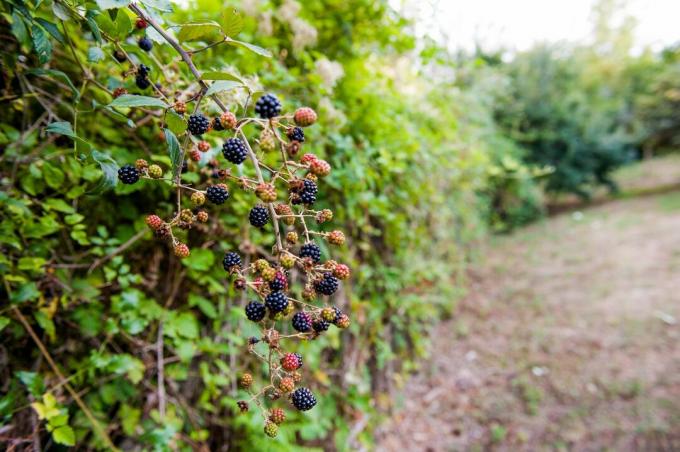As the name suggests, evergreen plants do not lose their foliage even in winter. We have summarized the best 7 evergreen plants for you.
Evergreen plants belong in every garden. They offer dense, green foliage all year round and are therefore well suited to beautifying terraces, balconies, house walls or unsightly garden corners. In addition, they also serve as protection from the elements.
Most climbing plants require little care and attention. Some plants need an additional climbing aid or climbing aid, while others, the so-called self-climbers, climb up almost any surface on their own.
Not every garden offers enough space for a real hedge. A cleverly placed privacy screen with an evergreen climbing plant is a good alternative. In every season you can create a green eye-catcher in your garden with different, hardy climbing plants. Also through blooming specimens, such as the yellow one Winter jasmine, you can conjure up amazing splashes of color in the cloudy season.
You can also find our top 10 here Climbing plants for fences and walls.
contents
- 1. Ivy (Hedera helix)
- 2. Honeysuckle (Lonicera caprifolium)
- 3. Creeping spindle (Euonymus fortunei)
- 4. Clematis (Clematis alternata)
- 5. Blackberry (Rubus sectio Rubus)
- 6. Knotweed (Persicaria)
- 7. Winter jasmine (Jasminum nudiflorum)
Not very many climbing plants are frost-resistant and have their foliage all year round. You can safely rely on the following seven plants:
1. Ivy (Hedera helix)
The hardy ivy native to us (Hedera helix) can definitely be called number one on the winter hardy climbing plant hit list. It makes few demands on the climate and also does not need a lot of sunlight.

It grows on almost all soils and is very robust. Ivy is very suitable for greening walls, facades, fences, railings and other external surfaces and always offers a perfect privacy screen.
2. Honeysuckle (Lonicera caprifolium)
Even with that honeysuckle (Lonicera caprifolium) is a very popular climbing plant. Its leaves shine in a beautiful dark green and thrive quickly and profusely. In summer the red-yellow flowers are reminiscent of the shape of a trumpet. A climbing aid or a mesh frame will help the plant to spread.

3. Crawler (Euonymus fortunei)
The crawler (Euonymus fortunei) belongs more to the ground cover, but some species are also very suitable as climbing plants. It thrives on any soil and loves sunny to partially shaded locations. The hardy crawling spindles with reddish leaves are particularly beautiful.

4. Clematis (Clematis alternata)
The evergreen Clematis, or evergreen clematis (Clematis alternata), is a woody climber. In late winter to spring, it begins to bloom profusely, white to pink. Even the hardy specimens should be protected from excessive frost with fir branches.

Ivy, honeysuckle, creeper and clematis are called evergreen plants. Their foliage is constantly renewed, the actual leaf exchange is hardly noticeable.
If you are looking for more hardy climbing plants with the longest possible foliage, you should turn to the wintergreen or semi-evergreen plants. Only in spring do evergreen plants replace their old leaves with new ones. Semi-evergreen plants lose some of their foliage in winter. The rest of the time follows in the spring, when the shoots begin to sprout.
5. Real blackberry (Rubus sectio Rubus)
The real blackberry (Rubus sectio Rubus) is well suited for fencing in gardens because of its lush growth and evergreen leaves. You can also plant them on wire frames or with climbing aids on walls as trellis fruit. So the delicious berries can easily be harvested and at the same time act as decorative wall cladding.

But beware: Because of its rampant vegetation, the blackberry can quickly become a nuisance and spread to undesired places in the garden. The annoyance about the uncontrolled spread is doubled if you injure yourself on the sharp thorns when removing the shrub. Therefore, it is better to make sure in advance that the real blackberry does not make itself independent.
6. Knotweed (Persicaria)
The semi-winter green knotweed (Persicaria) is considered to be very robust. It is particularly suitable if you want to green large areas quickly. During the growth phase, the knotweed grows up to 30 cm per day. Here, too, caution should be exercised: the growth can quickly become uncontrolled without close-knit care.

7. Winter jasmine (Jasminum nudiflorum)
The semi-winter green winter jasmine (Jasminum nudiflorum) belongs to the olive family (Oleaceae). Its bright yellow flowers, which can be seen even before the leaves shoot, are a bit reminiscent of forsythia. With a climbing aid, it can easily grow up walls.

Climbing plants can find a place for themselves even in the smallest garden. They are decorative, useful and, with little need for maintenance, make every gardener happy.
The 10 best hardy climbing plants can be found here in our special article.



